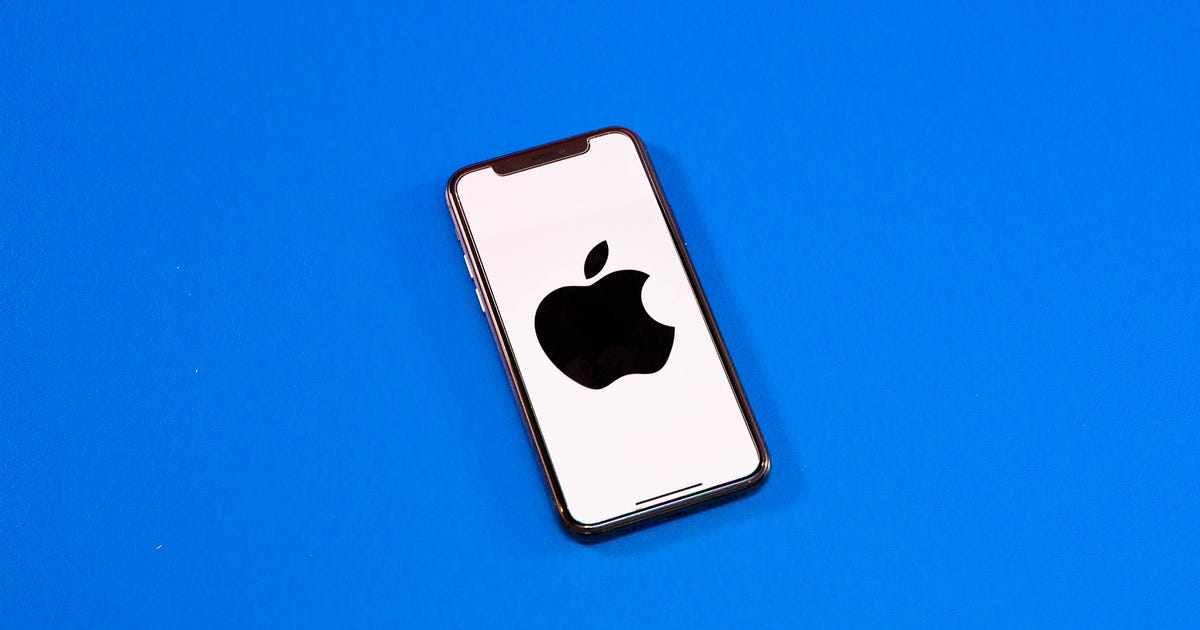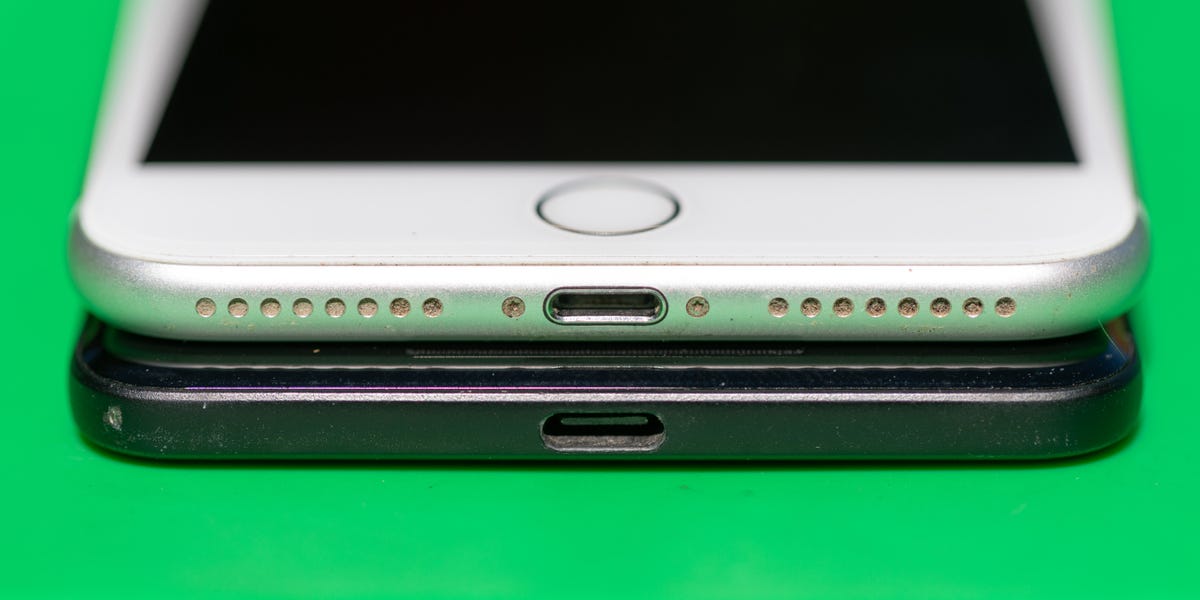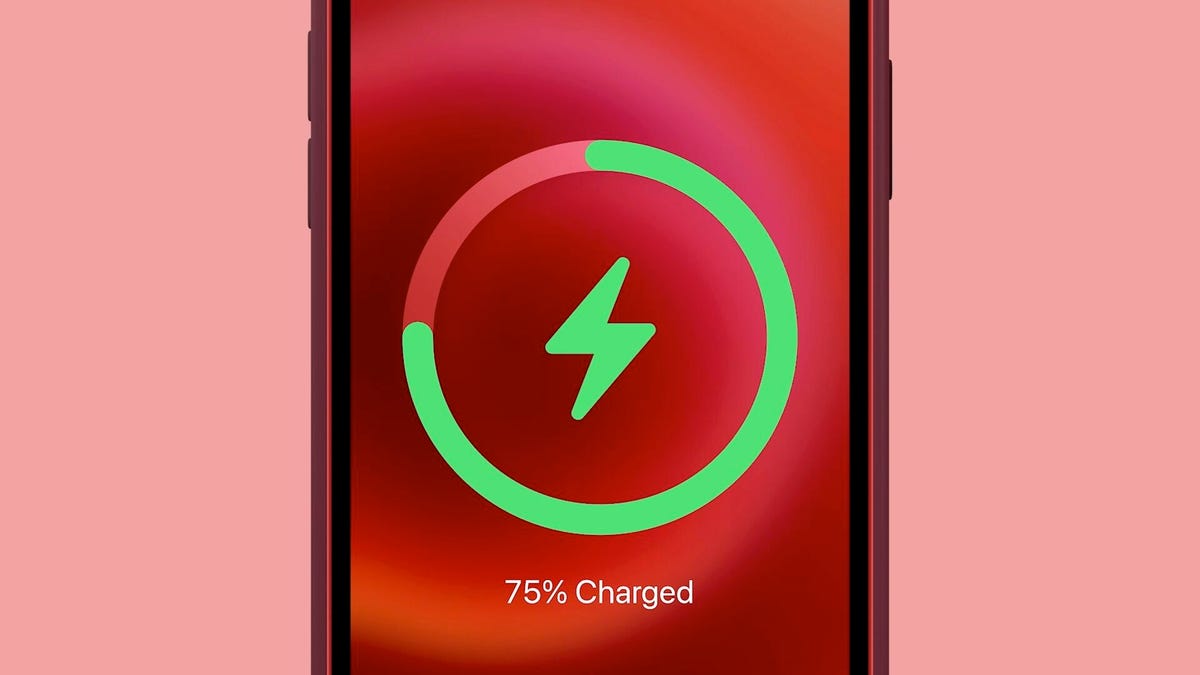Why An IPhone With No Charging Port Isn't Such An Absurd Idea
Apple iphone charging port not working charging port in iphone not working iphone charger port not working charging port not working iphone iphone charging port not charging my iphone charging port not working iphone charging port stopped working why is my iphone not connecting to wifi why won t my iphone charge why can iphone send pictures to samsung why analysis why animal testing is bad

Why an iPhone With No Charging Port Isn't Such an Absurd Idea
What's happening
The European Union agreed last month to make USB-C charging mandatory on all phones sold in Europe by 2024.
Why it matters
The decision has raised questions about the iPhone, which uses Apple's proprietary Lightning charger.
What's next
Industry experts and reports suggest Apple will eventually move the iPhone to USB-C. But there's a case to be made for an iPhone with no charging ports at all.
The Lightning connector has been around for most of the iPhone's 15-year existence, dating back to 2012. But now that the European Union has agreed to make USB-C the common charging mechanism on all phones by fall 2024, its days could be numbered.
The decision has fueled speculation about the iPhone's much-rumored switch to USB-C. But there's another possible route Apple could take. What if Apple released a new iPhone without ports at all?
That may sound unreasonable, but hear me out. Consider the iPhone's trajectory when it comes to wireless functionality, and it seems like Apple has been gradually laying the foundation for a completely wireless iPhone. The success of AirPods and Apple's focus on new types of cable-free connections like MagSafe all point in that direction.
Moving toward an iPhone with no physical ports would also build on the vision Apple laid out nearly six years ago when it announced the iPhone 7, which was the first model without a headphone jack. Apple Fellow Phil Schiller, who previously served as senior vice president of worldwide marketing, said, "It makes no sense to tether ourselves with cables to our mobile devices," as he explained the iPhone's shift away from the standard headphone jack. (Apple also introduced the first-generation AirPods during the same presentation.)
There's no telling whether Apple will make a change as drastic as eliminating the charging port altogether. Apple would undoubtedly face backlash in doing so, and there are still technical limitations that could prevent wireless charging from being a feasible full-time alternative to wired charging. But the EU's new rules, additional pressure from US politicians such as Sen. Elizabeth Warren and improvements in wireless protocols certainly make the case for a port-free iPhone stronger than ever.

An iPhone 7 Plus with Apple's Lightning port sits atop a Google Pixel 2 XL with USB-C port.
Stephen Shankland/CNETWill Apple release a completely wireless iPhone?
Apple never discusses upcoming products before it's ready to unveil them, so it's impossible to know exactly what's in store for the iPhone's future. But previous reports and patent filings suggest Apple may have at least considered how a truly wireless iPhone would work.
For example, an Apple patent application filed in 2019 describes an iPhone with an enclosure made entirely of glass that can be charged wireless through its display. Apple has also filed other patents related to wireless charging that would further the case for a port-free iPhone, should the technologies ever see the light of day. One such patent covers a MacBook design with a wireless charger built directly into the keyboard deck, an addition that could make wireless charging more convenient.
But a research note from TF International Securities analyst Ming-Chi Kuo, an industry observer known for his Apple predictions, called attention to the idea of a portless iPhone in 2019. Back then, Kuo said Apple could nix the Lightning port from its high-end iPhone in 2021, according to reports from CNBC, 9to5Mac and MacRumors. Bloomberg also reported in May that Apple has worked on iPhone models without charging ports in recent years.
However, Kuo's prediction didn't end up coming to fruition. Every model in the iPhone 13 lineup, which launched in the fall of 2021, has a Lightning port. Reports of a portless iPhone have also been scarce since then, with recent insights from Kuo and Bloomberg suggesting Apple may be developing USB-C-enabled iPhones.

Apple's MagSafe Battery Pack charges the iPhone 12 Pro Max wirelessly.
Patrick Holland/CNETThe iPhone is becoming less reliant on wired connections
It's uncertain whether Apple will ever release a truly wireless iPhone. But what is clear is that the iPhone has become increasingly well-equipped to function without any cables.
"The number of systems that actually 100% must have a cable are diminishing," Nick Maynard, head of research for Juniper Research, said in a previous interview.
The debut of AirPods in 2016 was perhaps the biggest catalyst for ditching wired connections. Although Apple's decision to eliminate the headphone jack was somewhat controversial back then, the industry has been quick to embrace the shift to wireless earbuds.
After Apple said goodbye to the headphone jack, many other smartphone makers, including Samsung, followed suit. Now, global shipments of true wireless earbuds have reached 68.2 million units in the first quarter of 2022 alone, growing by 17%, according to market research firm Canalys. AirPods are the top seller.
But AirPods' popularity isn't the only sign of the iPhone's independence from wires. Apple also launched a new type of cable-free connection mechanism for the iPhone called MagSafe in 2020 with the iPhone 12.
MagSafe, not to be confused with the MacBook charger of the same name, uses an array of magnets to more easily snap wireless chargers and other accessories to the back of compatible iPhone models. MagSafe chargers can also power up the iPhone 12 and iPhone 13 more efficiently than standard Qi wireless chargers. The iPad's Smart Connector, which is a series of flat circular metal contacts located on the back of some iPad Pro models, is another example of Apple's efforts to make its products less reliant on cables.
Newer technologies like ultra wideband have also made it easier for the iPhone to communicate with other devices wirelessly. UWB is a wireless protocol that uses radio signals to pinpoint a device's location, as my colleague Stephen Shankland explains. Although its primary use today is for pinpointing the location of belongings like your phone or car keys, it also could be useful for its original intended use: high-speed wireless data transfer. That could potentially further reduce the need for a Lightning port.

Wireless charging isn't as fast as wired charging.
AppleThe challenges that come with a completely wireless iPhone
The biggest argument against a port-free iPhone is that wireless chargers still don't work as quickly as regular wired chargers. Standard Qi wireless chargers will replenish the iPhone's battery at a rate of 7.5 watts, while Apple's MagSafe connector can charge at a rate of up to 15 watts. But the iPhone 8 and newer models support faster charging that replenishes 50% of the device's battery in 30 minutes. However, you'll need a wired connection to a compatible 20-watt power adapter to get those speeds. That's certainly an improvement over wireless charging, but it's still slower than the charging speeds offered by Android rivals like OnePlus.
Those who don't already own a wireless charger may also have to buy one separately if Apple releases an iPhone without ports. Apple stopped including power adapters in the iPhone's packaging with the iPhone 12, but it still offers Lightning cables in the box. Apple's MagSafe charger is priced at $39, but there are also non-Apple chargers with the company's official MagSafe designation. However, you also likely need a 20-watt USB-C power adapter to get the fastest charging speed. (Apple says power delivery will vary depending on the power adapter's wattage and system conditions.)
Even with these caveats, wireless charging has become ubiquitous on modern smartphones. Compatible chargers also aren't as expensive as they were five years ago, strengthening the case for a completely wireless iPhone. For example, third-party wireless chargers can be found on Amazon for less than $20.

An iPhone connected over a MagSafe charger to a MacBook.
Patrick Holland/CNETBut Gene Munster, a managing partner at Loup Ventures, thinks there are bigger improvements to be made when it comes to charging phones without a cable. He envisions a future in which smartphones can be charged completely wirelessly without having to make contact with a charging pad.
Munster said his firm has met with private companies who are working on technologies like this, but cautioned that it's in its early stages. Apple has also filed a patent application hinting that it's considered technology that can charge iPhones via Wi-Fi. Ossia, a Washington-based tech company, has also developed a charging system that it claims can power up electronic devices from a distance using RF antenna technology.
"Imagine never having to think about charging your phone is the goal," Munster said in a previous interview.
If Apple does have its sights set on true wireless charging, it likely won't arrive in the iPhone anytime soon. It's also unclear if Apple will ever release a completely portless iPhone, considering recent reports from Bloomberg and Kuo point toward USB-C as being the most likely alternative to Lightning.
Apple has also seemingly walked back its stance on reducing the amount of connections in its MacBook Pro laptops recently. The 2021 MacBook Pro has an SD card slot and an HDMI port, which means it has more connectivity options than we've seen on Apple's laptops in years. (The newer 13-inch M2-powered MacBook Pro, however, only includes two Thunderbolt/USB 4 ports.)
But the idea of an iPhone that can function without wired cables certainly seems to align with Apple's vision from 2016. As Apple's former design chief Jony Ive said when describing the headphone jackless iPhone 7's design, the company's "obsession remains to continuously simplify and improve." If done right, an iPhone with no charging ports could accomplish just that.
Source
